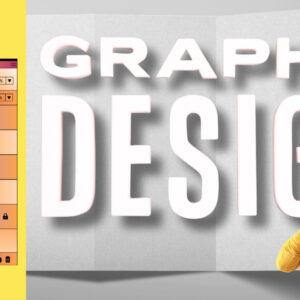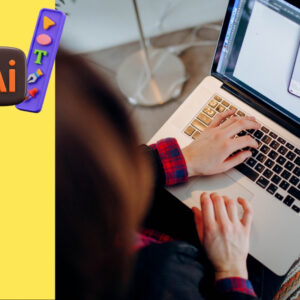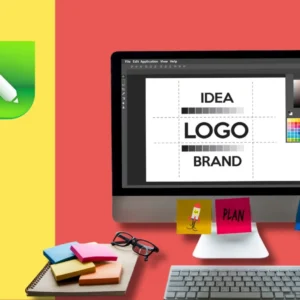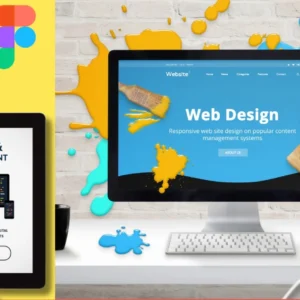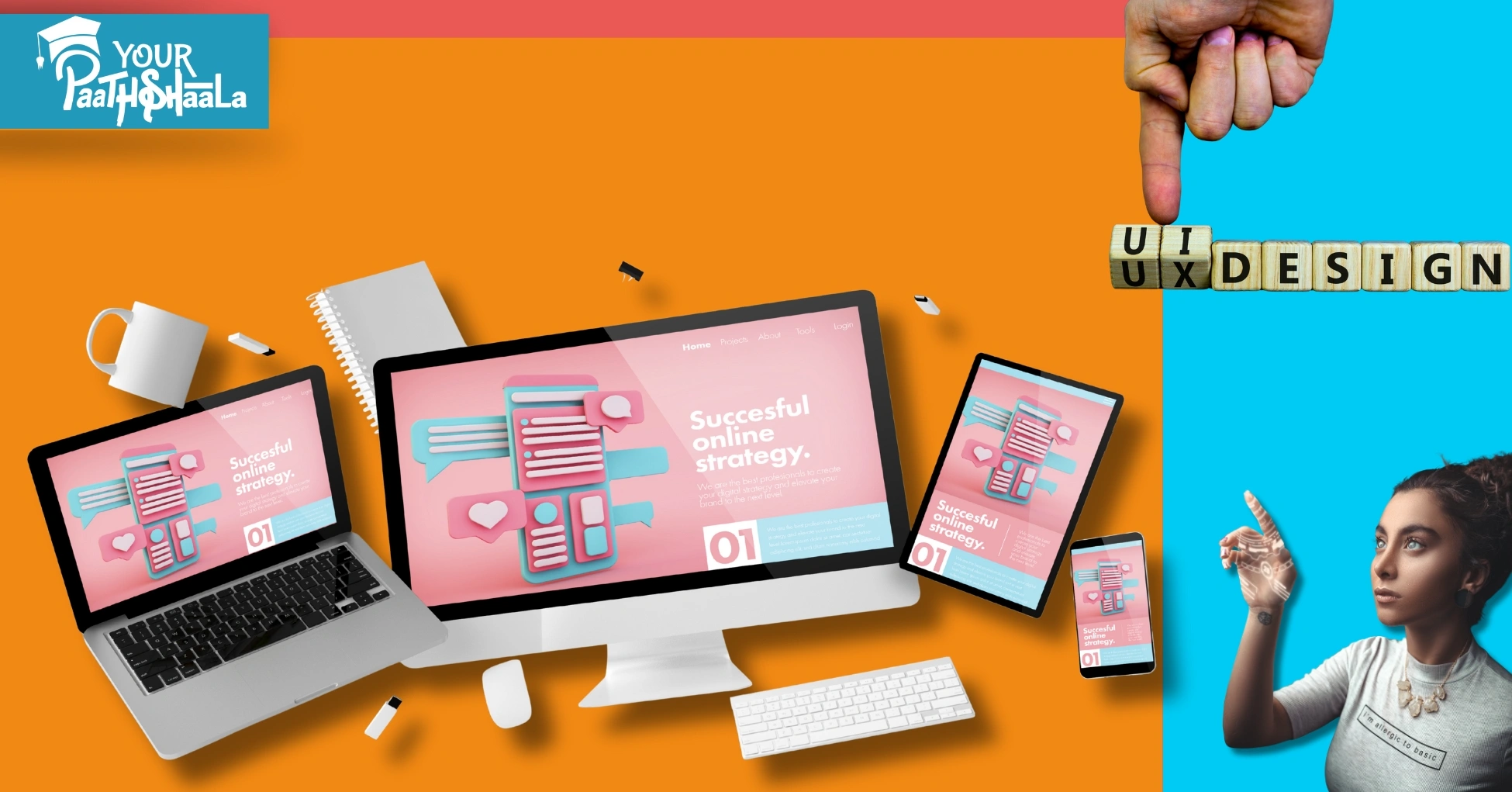
In 2025, UI and UX design are pivotal in creating user-friendly digital products, but what sets them apart? Understanding the differences between UI (User Interface) and UX (User Experience) design is crucial for aspiring designers in India’s booming tech market. This beginner-friendly guide explains UI vs UX design with practical insights, tips, and a clear roadmap to master both. For example, a sleek interface (UI) paired with seamless navigation (UX) can elevate a mobile app. Whether you’re freelancing in Bangalore or aiming for global projects, these skills are essential. Ready to dive in? Let’s explore UI vs UX design and their differences in 2025!
Why Understanding UI vs UX Design Matters
Knowing the distinction between UI and UX design helps you choose the right career path or deliver better projects. First, it clarifies the skills needed for each role, from visual design to user research. Next, it ensures you meet client expectations in India’s $50,000 crore digital market, per IAMAI. For instance, a poorly designed UX can frustrate users, even with a stunning UI. However, misunderstanding these roles may lead to ineffective designs. Mastering UI vs UX design boosts your career in India’s competitive landscape.
What is UI Design?
UI design focuses on the visual and interactive elements of a digital product, like buttons, icons, and layouts. It’s about creating an appealing, intuitive interface that users interact with directly. Creative Boom notes that UI designers use color, typography, and imagery to enhance aesthetics. For example, a clean app interface with bold fonts attracts users. In India, UI design often incorporates vibrant cultural colors to resonate locally. UI is the “look and feel” of a product, making it visually engaging.
What is UX Design?
UX design centers on the overall user experience, ensuring a product is functional, intuitive, and enjoyable. It involves research, wireframing, and testing to optimize how users navigate and interact. Adobe highlights that UX designers prioritize user needs, like seamless app flows. For instance, a well-designed UX ensures a shopping app is easy to use on Indian smartphones. UX is the “functionality and flow” behind a product, enhancing user satisfaction.
Key Differences Between UI and UX Design
Understanding UI vs UX design requires breaking down their core differences. These distinctions shape their roles, tools, and goals in 2025.
Focus and Purpose
UI design focuses on aesthetics, crafting visually appealing interfaces like buttons or color schemes. UX design aims to improve usability, ensuring a product is easy to navigate. For example, UI creates a vibrant app button, while UX ensures it’s placed logically. UI is about appearance; UX is about experience. Both are crucial for a successful product.
Tools and Skills
UI designers use tools like Figma or Adobe Photoshop for visual elements, requiring skills in typography and color theory. UX designers use tools like FigJam or Axure for wireframing and prototyping, needing skills in user research and testing. For instance, UI designers focus on font pairings, while UX designers analyze user feedback. Each role demands distinct technical expertise. In India, both leverage tools to meet mobile-first demands.
Process and Workflow
UI design involves creating high-fidelity mockups and refining visuals based on brand guidelines. UX design includes researching user needs, creating wireframes, and testing prototypes. For example, a UX designer maps a user’s journey through an app, while a UI designer styles the final screens. UX is iterative, focusing on functionality; UI is detail-oriented, focusing on polish. Collaboration between both ensures a cohesive product.
Outcome and Impact
UI design delivers a visually consistent interface, like a sleek e-commerce app. UX design ensures the app is intuitive, reducing user frustration. For instance, a beautiful UI without good UX may confuse Indian users on mobile devices. UI impacts first impressions; UX drives long-term satisfaction. Together, they create products that users love.
Tools for UI and UX Design
To master UI vs UX design, use these beginner-friendly tools, tailored for Indian designers on a budget. They support both interface and experience design.
- UI Design Tools: Figma, Adobe Photoshop, Canva (free or ₹500-₹3,000/month) for visuals.
- UX Design Tools: FigJam, Axure, or Balsamiq for wireframing and prototyping.
- Research Tools: Google Forms or Typeform for user feedback surveys.
- Inspiration Platforms: Behance, Dribbble for UI/UX design trends.
- Testing Tools: Lookback or Maze for usability testing, often free for basic use.
These tools are accessible, with free options like Canva, making UI vs UX design affordable for Indian beginners.
6 Steps to Master UI and UX Design
Follow this beginner-friendly guide to understand and apply UI vs UX design in 2025. These steps are practical and aligned with India’s design trends.
1. Learn UI Design Basics
Master visual design skills like typography, color theory, and layout using Figma or Canva. For example, practice designing a vibrant app button with Indian-inspired colors like saffron. Take free YouTube tutorials or Coursera courses to learn fast. Focus on creating clean, appealing interfaces. UI skills form the foundation for attractive designs.
2. Study UX Design Principles
Learn user research, wireframing, and prototyping to understand UX design. For instance, create a wireframe for a shopping app using FigJam to map user flow. Study UX basics on Skillshare or through free resources like Interaction Design Foundation. Practice designing intuitive navigation for Indian mobile users. UX skills ensure functionality and ease of use.
3. Practice with Real Projects
Create 5-10 practice projects, like a mobile app or website, to apply UI and UX skills. For example, design a food delivery app with a colorful UI and seamless UX for Indian users. Use Figma for both UI mockups and UX wireframes. Test your designs on mobile devices, as 70% of Indian users are mobile-first, per IAMAI. Projects build hands-on experience.
4. Incorporate Indian Aesthetics
Infuse cultural elements, like Diwali motifs or bold typography, into your UI designs for local appeal. For UX, ensure navigation suits Indian user habits, like quick checkout flows. Study Indian art on Pinterest for inspiration, such as Warli patterns. Test designs with local peers for feedback. Cultural relevance makes your work stand out.
5. Conduct User Testing
Test your UX designs with tools like Maze to gather feedback on usability. For example, ask users to navigate your app prototype and note pain points. Use Google Forms for simple surveys targeting Indian audiences. Refine UI based on feedback, like adjusting button sizes for clarity. Testing ensures your designs are user-friendly.
6. Build a Portfolio and Pitch
Create a portfolio showcasing UI and UX projects, like app mockups or wireframes. For instance, include a project with a vibrant UI and intuitive UX for an Indian e-commerce brand. Use Behance or a personal site (₹2,000/year on Hostinger) to display your work. Practice pitching to clients, explaining UI’s appeal and UX’s functionality. A strong portfolio secures projects.
Total Time: 20-40 hours to learn basics, ongoing practice for mastery
Common Mistakes to Avoid
Avoid these pitfalls to excel in UI vs UX design. First, don’t focus only on UI aesthetics; poor UX can ruin a beautiful interface. Next, avoid skipping user research; it’s critical for effective UX. Also, don’t ignore mobile optimization, as most Indian users browse on phones. For example, a cluttered UI may frustrate users in India’s fast-paced market. Finally, don’t neglect feedback; it refines both UI and UX.
Tips for Mastering UI and UX Design
To succeed in UI vs UX design in India, follow these practical tips. First, start with free tools like Canva or FigJam to build confidence. Next, study Indian user behaviors, like preference for quick app navigation, to inform UX. Additionally, join design communities on LinkedIn for feedback and networking. For instance, a vibrant UI with intuitive UX can attract Indian startups. Finally, practice weekly to refine your skills and stay trendy.
2025 Trends in UI and UX Design
In 2025, UI and UX design are evolving, per Creative Boom and Adobe. UI trends include vibrant Indian-inspired colors, like turquoise, and bold typography like Poppins. UX trends focus on micro-interactions, like animated buttons, for engaging experiences. X posts highlight mobile-first designs and AI-driven prototyping as popular in India. For example, a sleek UI with seamless UX can elevate a shopping app. Staying updated ensures your skills align with market demands.
Why UI and UX Design Matter in India
India’s tech industry is booming, with digital ad spending projected at ₹50,000 crore by 2026, per IAMAI. Understanding UI vs UX design helps you create products that resonate with Indian users, especially on mobile devices. For instance, a user-friendly app with a vibrant interface can win e-commerce clients. Both skills are in high demand in tech hubs like Bangalore. Mastering these roles ensures you thrive in India’s competitive market.
Budgeting for UI and UX Design
Learning UI and UX design is affordable for Indian designers. Figma offers a free plan, while Adobe Photoshop costs ₹500-₹3,000/month with a free trial. Free resources like Google Fonts or Unsplash support UI design. UX tools like Maze offer free basic testing. For example, a setup with free tools and a ₹2,000/year portfolio domain keeps costs low. Budget wisely to focus on skill-building.
Scaling Your UI and UX Skills
Once you master UI and UX, scale your skills for career growth. Build a portfolio with diverse projects, like apps or websites, showcasing both UI and UX. Offer services on WorknHire, charging ₹1,000-₹5,000 per project. For example, specialize in mobile-first designs for Indian brands. Promote your work on Instagram to attract local clients. Regular practice and feedback keep your skills sharp.
Conclusion
Understanding UI vs UX design in 2025 is essential for Indian designers aiming to create user-friendly, visually stunning products. UI focuses on aesthetics, while UX ensures functionality, and both are vital for success. Use our guide to learn tools, practice projects, and incorporate Indian aesthetics. For example, design a mobile app with vibrant UI and seamless UX to test your skills. Avoid pitfalls like skipping research or ignoring mobile optimization. Ready to excel? Start mastering UI vs UX design today and shine in India’s design scene! Want to learn graphic designing through practical, hands-on training? Join YourPaathshaala, Raipur’s leading skill development institute. Contact us at 📞 +91-8305209520 for more information!


